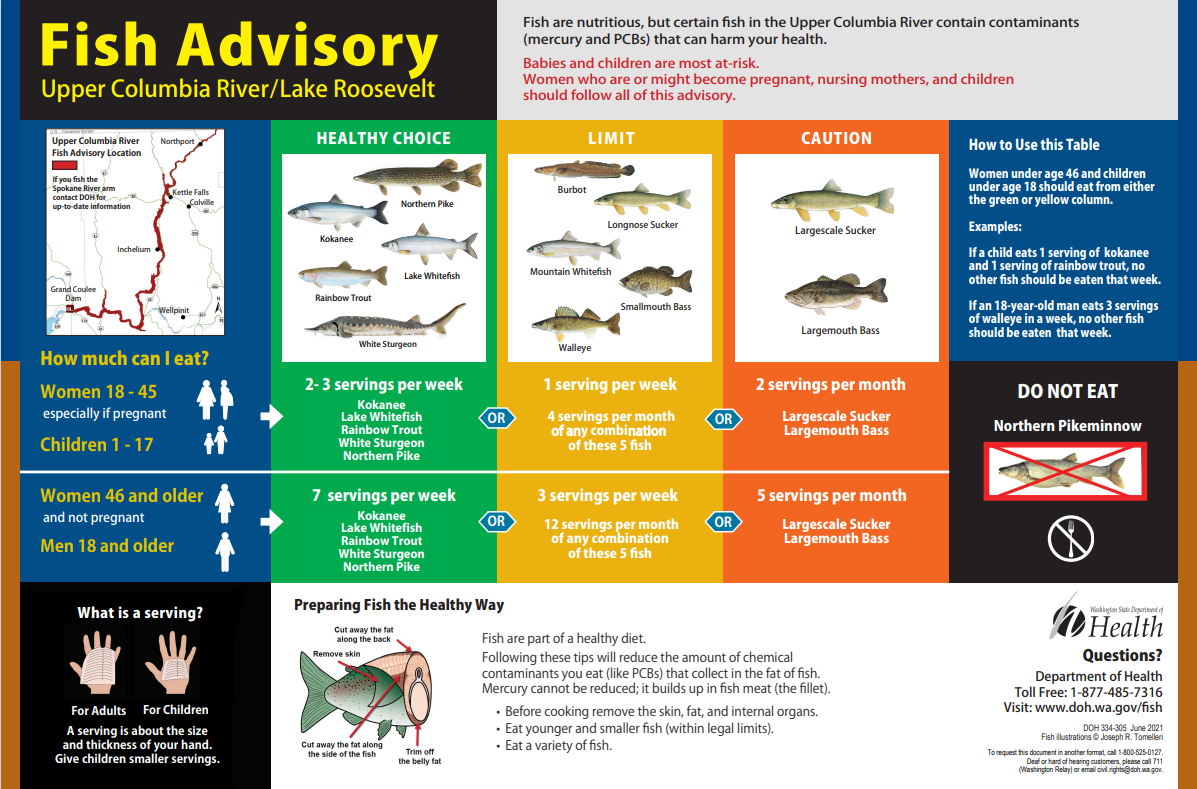Pollution Impact
The Columbia River has sustained our people for generations — but industrial pollution has left a lasting mark. Scientists and environmental experts are still working to understand the full effects of metal contamination on the river, the land, and the creatures that live here.
What We Know So Far
The Washington State Department of Health has issued fish consumption advisories for Lake Roosevelt and the Upper Columbia River. These warnings are based on mercury levels found in fish tissue, especially in species like northern pike minnow and walleye. WA Department of Health, Columbia River (Upper)/Lake Roosevelt webpage link.
Slag in the river
A black, sand-like material called slag — rich in toxic metals — was discharged directly into the Columbia River for decades. Today, this material still shows up in river sediments and on beaches.
Slag discharge from Trail Smelter, 1992
Slag-contaminated sediments can be toxic to small aquatic life like zooplankton, which are a key food source for fish. Sensitive fish species — such as White Sturgeon, Rainbow Trout, and Kokanee — may be affected, though some impacts are difficult to measure.
Cultural Impacts and What’s Been Lost
In the past, “pearl shell” mussels thrived in the Columbia River and were an important traditional food for Tribal members. Today, they are no longer found in the Upper Columbia River.
Healthy populations of these mussels still survive in the Kettle and Okanogan Rivers, but their disappearance from the mainstem Columbia is deeply concerning. Although the cause hasn’t been proven, metal pollution and slag are suspected contributors, since mussels are highly sensitive to contamination.
Why This Matters
Understanding pollution impacts helps us:
Protect the health of the community
Preserve traditional foods and river life
Guide future cleanup, restoration, and monitoring efforts
Our work continues to uncover how contamination has changed the river — and what we can do to restore and protect it.
Learn More: How Pollution Affects Fish Health
"Acute and Chronic Sensitivity of White Sturgeon and Rainbow Trout" - USGS Report 2013-5204






